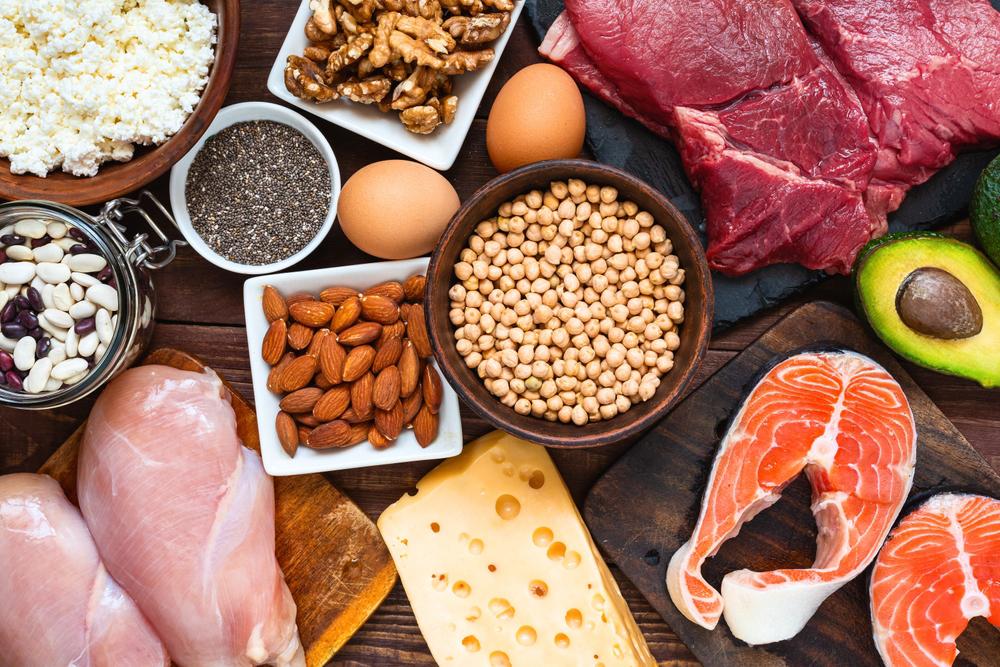 Where do macronutrients come from? What role do they play in overall health and athletic performance?
Where do macronutrients come from? What role do they play in overall health and athletic performance?
Here, TrueSport Expert Stephanie Miezin, MS, RD, CSSD, the Director of Nutrition for the NWSL team, KC Current, is explaining macronutrients and breaking down the difference between fat, protein, and carbohydrates so you can help your athlete eat the right thing at the right time. And don’t forget to visit the TrueSport Nutrition Guide for more fueling guidance!
Macronutrients
So, what are macronutrients? “Macronutrients are where all energy comes from in our food,” explains Miezin. “Anytime there are calories—a measure of energy—in a food, they come from a combination of carbs, proteins, and/or fats.”
There are four macronutrients: carbohydrates, fat, protein, and alcohol. (For the sake of this article, we won’t be talking about alcohol!)
Carbohydrates
Why we need it: “Carbs are arguably the most important fuel source for athletes to be thinking about,” says Miezin. “They are the body’s preferred and primary source of energy. The brain in particular really loves carbohydrates and requires them to run at its best.”
When you eat carbohydrates, your body breaks them down into glucose, which is essentially the fuel the body runs on. “We know that higher intensity activity requires more carbohydrates, which is why it’s so important for athletes to eat enough carbs,” she adds. “We know that if you don’t have enough carbohydrate on board when you start exercising or you don’t replenish it during a longer activity, you simply can’t perform at the same intensity.”
Where we get it: “Carbs are found in so many kinds of foods, so it can be relatively easy to get enough of them,” says Miezin. Carbohydrates are often broken into a few categories, since they run the gamut from broccoli to cupcakes.
- Nutrient-dense carbs: These foods are rich in carbs and other nutrients like vitamins, fiber, minerals, and antioxidants. A healthful, fueling diet should contain plenty of these foods. Examples include beans, whole grains, fruits, sweet and white potatoes, corn, plantains, and yucca. These foods tend to take longer to break down into glucose, especially as they tend to contain fiber, which can slow digestion.
- Low-nutrient density carbs: Foods in this category are rich in carbohydrates, but otherwise lacking in nutrients like fiber or vitamins. Refined grains (white flour, white rice, white pasta, etc.), candy, cookies, soda, and sweets can all be considered in this category. While these foods don’t contribute much nutrient density to the diet, they can play an important role in helping athletes meet their energy needs and fuel performance.
A note on veggies: Vegetables also contain carbohydrates, but in low amounts relative to their volume. One reason is because these sources are packed with fiber, which supports good digestion and gut health, but doesn’t provide energy. A pile of kale will not sustain an athlete for a workout, even if it technically does contain carbohydrates.
When to eat it: Carbohydrates should be present at every meal, and the further away the meal is from training time, the more the focus can be on nutrient-dense carb foods like potatoes, beans and whole wheat pasta. “These nutrient-dense foods are usually best to have at meals that allow some time for digestion before exercise as the fiber they contain could lead to an upset stomach if consumed too close to activity,” says Miezin.
However, before, during, and after practice and competition, athletes need to make sure that they’re providing their bodies with easy-to-access fuel sources, which is when those lower nutrient-density carb-foods should be prioritized. “These quick-digesting carbs are also important for helping athletes meet their overall energy needs, because you can only eat so many potatoes,” says Miezin. “All of the carb types have a time and a place.”
How much to eat: The recommendation for young athletes is to eat anywhere from 3-8 grams of carbohydrate per kilogram of body weight. Carbs should make up roughly 45-60 percent of total calories—with a higher percentage of carbohydrates on heavy training days and during competition. Miezin also notes that your athlete doesn’t need to perfectly balance their percentages of macronutrients. This is a rough guideline, not something that needs to be tightly controlled.
Protein
Why we need it: “All of our cells are made of protein, so we need protein to consistently turn over all cells in the body,” says Miezin. “Muscles, bone, tissue, intestines—protein is critically important. For athletes, it’s particularly important to aid muscle repair, recovery, and growth. Protein tells the body it’s time to repair the muscle, and it gives it the building blocks to do so.”
However, unlike carbohydrates, protein is not a good fuel source for the body because proteins are hard to break down. “The body really doesn’t like to burn it as fuel,” Miezin adds.
 Where we get it: Meat, poultry, fish, eggs, dairy, tofu, beans, nuts and seeds, whole grains, and protein-fortified foods are all common sources of protein. “When choosing animal-based sources of protein, look for leaner options since the fat from animal protein is mostly saturated fat, which we want to limit for best health,” says Miezin. When looking for leaner options, consider beef that has a lower fat percentage on the label and chicken without the skin. The same is true for dairy products. While they don’t have to be no-fat versions, the low-fat ones will contain less saturated fat. Seafood like salmon is an exception, as it is rich not in saturated fats, but more healthful unsaturated fats like omega-3s.
Where we get it: Meat, poultry, fish, eggs, dairy, tofu, beans, nuts and seeds, whole grains, and protein-fortified foods are all common sources of protein. “When choosing animal-based sources of protein, look for leaner options since the fat from animal protein is mostly saturated fat, which we want to limit for best health,” says Miezin. When looking for leaner options, consider beef that has a lower fat percentage on the label and chicken without the skin. The same is true for dairy products. While they don’t have to be no-fat versions, the low-fat ones will contain less saturated fat. Seafood like salmon is an exception, as it is rich not in saturated fats, but more healthful unsaturated fats like omega-3s.
When to eat it: “Like carbs, protein should truly be in all meals and snacks throughout the day because it’s so important for overall health as well as athletic recovery,” says Miezin. “And because protein is harder to eat in large quantities compared to carbohydrates, having it in every meal and snack is the best way to ensure that your athlete is eating enough overall. If they miss protein at one meal, it’s much harder to hit the total amount for the day. And eating more frequently makes it easier to meet your overall needs.”
How much to eat: For athletes, 1.6 grams of protein per kilogram of body weight is typically appropriate. This should look like 20-35 percent of total calories coming from protein.
Fat
Why we need it: Like carbohydrates, we need fat for energy. “Fat is an important source of energy, but because it’s a slower burning fuel, it’s not as important for high intensity energy during sport,” says Miezin. “Instead, it’s important for overall energy throughout the day, as well as a feeling of being satisfied after eating. It also plays a role in hormone production and absorption of our fat-soluble vitamins, which include vitamins A, D, E, and K.”
Where we get it: The best fat sources are unsaturated fats, which are most often found in plant foods, like nuts, seeds, avocado, and olive oil, says Miezin. Oily fish like salmon are also great sources of these healthful fats. Saturated fats found in meat, dairy, and some oils, including coconut oil, don’t need to be avoided entirely but should be consumed in moderation.
When to eat it: Fat can be less of a focus because it’s typically included in most meals since oil is used to sauté vegetables, and meat, dairy, or fish is typically on the menu. Ideally, most meals will have some fat on the plate, with the exception of meals directly before training and snacks during training, as fat takes longer to digest and can cause gut upset for some athletes. It also shouldn’t be a priority in the meal right after training, as protein and carbohydrates should be the stars of that meal.
How much to eat: For youth athletes, Miezin recommends fat making up 20-35 percent of total calories. Fat can be tricky, because it’s not always obvious where it is within a meal, since it’s usually part of the cooking process (as with olive oil) or it’s combined with the protein source (as with dairy, fish, and meat). So, it does take some effort to understand a serving size of fat, but it’s usually fairly easy to reach that percentage simply by not actively avoiding fat. If you’re not sure if your athlete is getting enough fat in their diet, check the nutrition label on food packaging and use that number to measure what a serving looks like so that you have a frame of reference.
________________________
Takeaway
Understanding the role each macronutrient plays in overall health, as well as athletic performance and recovery, is key to helping your athlete feel and perform at their best. Carbohydrates are the best source of fuel and should be included in every meal and snack, especially before, during, and after exercise. Protein is essential for repairing and rebuilding muscle and should be included in every meal, particularly after training. And fat is an important slower-burning fuel, supports brain health and development, and should be included in every meal in moderation.



